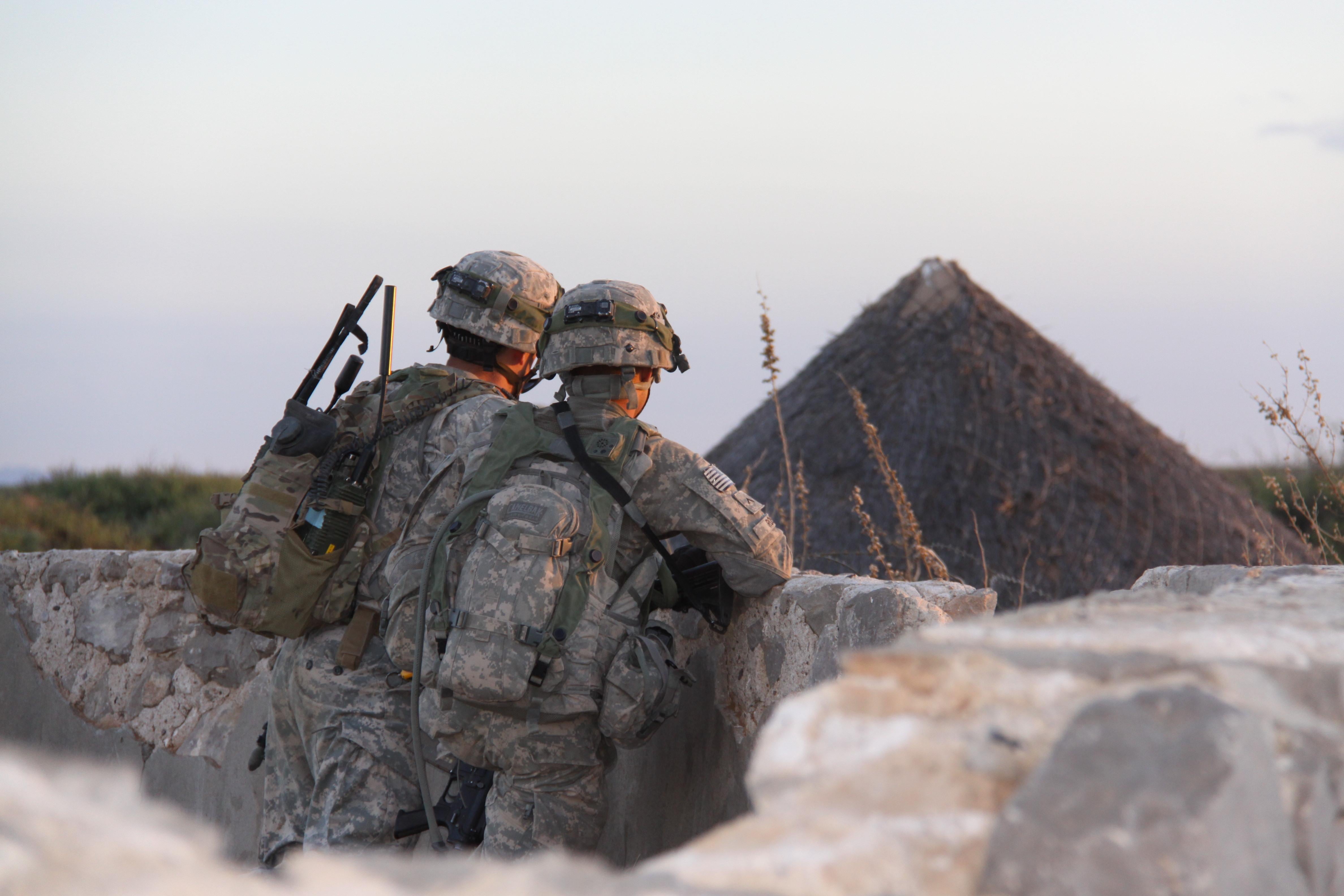The Army’s first iteration of new network tools, known as Capability Set ’21, was heavily influenced by existing network gaps identified by the 82nd Airborne on more than a year’s worth of deployments.
According to Capt. Brian Delgado, S6 of the 82nd Airborne Division’s 1st Brigade Combat Team, the “biggest game changer” for soldiers in the field provided in the integrated tactical network kit of Capability Set ’21 was the secure but unclassified environment.
The SBU environment allows soldiers to more easily share and receive information. In the current network, information that flows through the network is classified, and many lower-level users don’t have proper clearances.
“Army operational construct requires battalion formations to conduct combined arms missions, but today’s network does not support the battalion’s organic capacity to deconflict an air picture, nor an ability to combine dismounted, mounted, fires, intelligence and air pictures into a combined operating picture (COP),” Delgado said. “Part of this challenge is due to the fact that dismounted and most mounted COP tools like Nett Warrior (NW) and Joint Battle Command-Platform resided on the Secret enclave. The vast majority of users at the tactical level do not possess Secret clearances, which makes sharing and receiving key information difficult.”
Capability Set ’21 lets soldiers securely share controlled unclassified information across the network, allowing war fighters on the ground to receive important information regardless of their security clearance. With the new tools, the Army moved from a 100 percent classified network to a 75 percent SBU network.
“This means we now were able to use software applications at the Unclassified level in a tactical environment. SBU allowed the utilization of tactical software like the Tactical Assault Kit (TAK) to provide a [combined operating picture] down to the lowest level of leaders,” Delgado said.
Col. Garth Winterle, project manager for tactical radios at Army Program Executive Office Command, Control, Communications-Tactical, said in a May interview with C4ISRNET that the SBU architecture ”opens the door for a lot of different things,” including improved information sharing with coalition partners.
The integrated tactical network kit also unifies the disparate operating picture into a single digital operating picture. The combined operating picture “directly reduces risk in the clearance of fires, combat air support and maneuvering in widely dispersed formations,” Delgado said.
“It allowed battalion commanders to fight teams in a dispersed manner that would have been impossible with legacy systems, and therefore greatly reduced the risk to the battalion combat power that enemy indirect fires commonly present,” Delgado added.
Capability Set ’21 was focused on solving immediate network capability gaps with current technology, while also making network hardware far more expeditionary and while improving network transport capabilities. The capability set includes new radios as well as smaller and lighter servers and satellite terminals. It was designed through collaboration between Army PEO C3T and the Army Network Cross-Functional Team.
The Army completed critical design review of Capability Set ’21 earlier this year and started procuring new tools this month.
Right now, the “majority” of the Army’s command-and-control systems sit on large vehicles that aren’t useful on expeditionary operations, Delgado said. With the new technology, the integrated tactical network “separated these systems from vehicles, allowing for more network access during early expeditionary operations that we performed,” reducing the reliance on vehicles and allowing soldiers to dismount systems based on needs.
Delgado said the new integrated tactical network, or ITN, hardware is “orders of magnitude” smaller than existing tools, providing more flexibility in how units choose command-and-control equipment for operations.
“We were able to load a battalion tactical operations center worth of equipment onto a nonstandard small tactical vehicle, and then move it in a matter of hours onto a UH-60 [Black Hawk helicopter] to function as a true command aircraft,” Delgado said.
The Capability Set ’21 ITN kit also includes radio waveforms that are more resilient, and it allows for data transmission. The 82nd Airborne has previously been reliant on the Single Channel Ground and Airborne Radio System as well as the Soldier Radio Waveform for tactical radio communications, but Delgado said that both had “limitations regarding their effectiveness and survivability for distributed formations,” and that they didn’t allow for SBU transmissions.
The Army is investing several new radios with more resilient waveforms as part of its modernization initiative, including the two-channel leader radio.
“The ITN presents a significant increase in radio resiliency while operating in a contested environment. Most noteworthy are a resistance to tactical jamming, and a near-complete inability of the enemy to ... find radio broadcasts,” Delgado said.
Andrew Eversden covers all things defense technology for C4ISRNET. He previously reported on federal IT and cybersecurity for Federal Times and Fifth Domain, and worked as a congressional reporting fellow for the Texas Tribune. He was also a Washington intern for the Durango Herald. Andrew is a graduate of American University.








